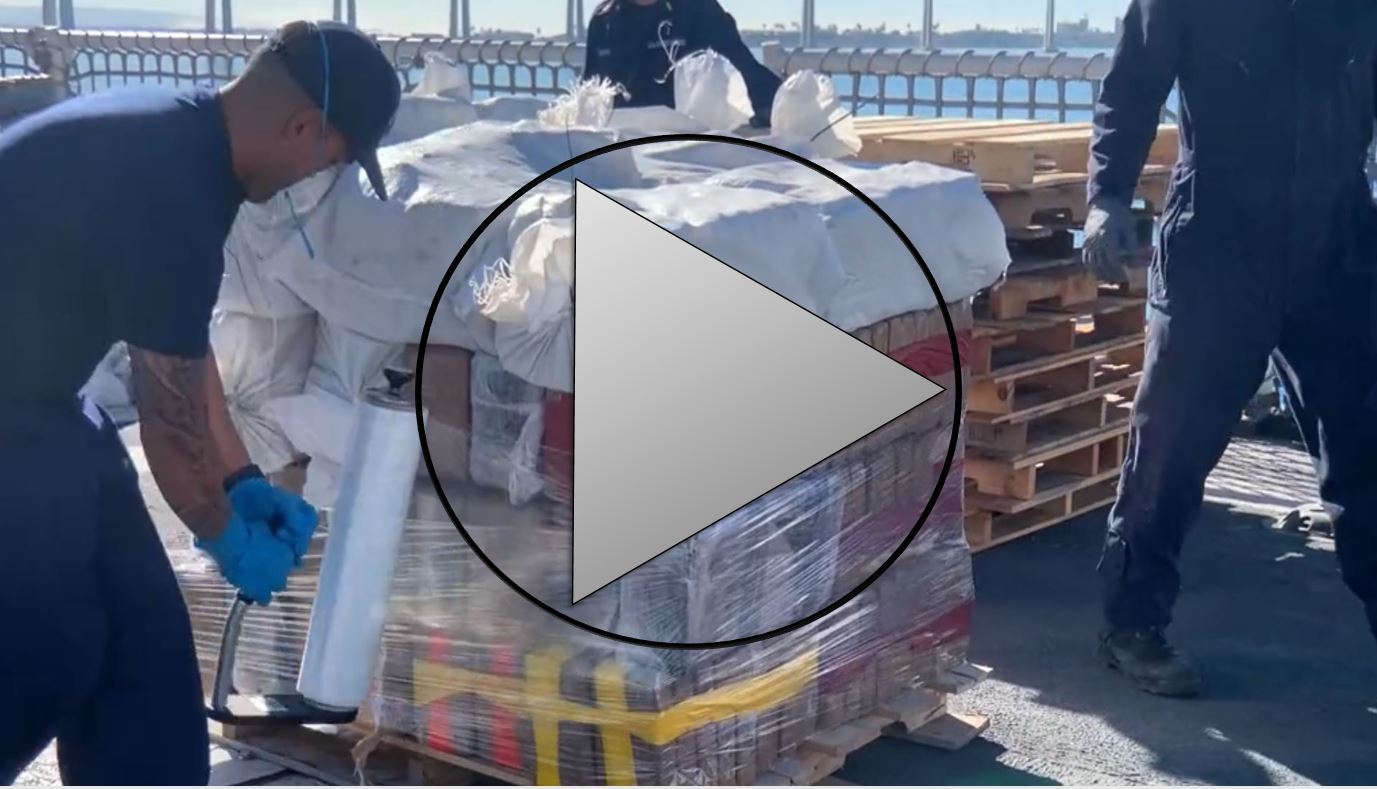Coast Guard Cutter Active offloads $159 million of cocaine, returns to Port Angeles
U.S. Coast Guard sent this bulletin at 12/22/2020 05:35 PM EST
| News Release |
Dec. 22, 2020 |
Coast Guard Cutter Active offloads $159 million of cocaine, returns to Port Angeles
 |

|
 |
 |
 |
 |
 |
Editors' Note: Click on images to download high resolution version.
PORT ANGELES, Wash. – The Coast Guard Cutter Active returned to its homeport of Port Angeles Friday following a 46-day deployment to the Eastern Pacific Ocean, Dec. 18.
Nicknamed “Lil Tough Guy,” the Active’s crew patrolled 10,056 total nautical miles off the coast of Central America, deployed with an armed Coast Guard MH-65 Dolphin helicopter crew from the Helicopter Interdiction Tactical Squadron (HITRON) in Jacksonville, Florida, which specializes in Airborne Use of Force (AUF) and drug-interdiction missions.
HITRON helped Active search for, detect and stop, drug smuggling vessels.
Pacific Area Tactical Law Enforcement Team (TACLET) personnel sailed with the Active and augmented the unit’s law enforcement capabilities, proving critical during interdictions. TACLET are Coast Guard members that specialize in counter-narcotics tactics and procedures and deploy aboard U.S. and allied navy ships that transit drug trafficking areas.
In just 72 hours, the Active crew interdicted two vessels suspected of drug smuggling and seized approximately 4,200 kg of cocaine worth $159 million. These efforts resulted in the detainment of 13 suspected narcotics traffickers.
The U.S. Coast Guard narcotics interdiction efforts aim to thwart transnational criminal organizations, which are fueled by drug trafficking money. Deployments like the one Active completed attack supply networks in Central and South America. Active’s success highlights the impact that a single Coast Guard unit can have when working with interagency and foreign partners.
“The Active crew gave everything to this deployment. We proved our readiness by adapting to an unscheduled embarkation of a HITRON helo and seamlessly integrated that crew,” said Cmdr. James O’Mara, Active’s commanding officer. “We cancelled port calls, extended patrol legs, stretched our fuel state and food stores to the limit, all in support of this mission. The crew answered the call, and they executed with distinction. Our success traces back to the support from our families – and these results serve as a capstone for an entire year of operational results, which have confirmed, for me, that no crew compares to Active. Period.”
On April 1, U.S. Southern Command began enhanced counter-narcotics operations in the Western Hemisphere to disrupt the flow of drugs in support of Presidential National Security Objectives. Numerous U.S. agencies from the Departments of Defense, Justice, and Homeland Security cooperated to combat transnational organized crime. The Coast Guard, Navy, Customs and Border Protection, FBI, Drug Enforcement Administration, and Immigration and Customs Enforcement, along with allied and international partner agencies, play a role in counter-drug operations.
The fight against drug cartels in the Eastern Pacific Ocean and the Caribbean Sea requires unity of effort in all phases from detection, monitoring, and interdictions, to criminal prosecutions for these three interdictions by United States Attorney’s Offices from the Middle District of Florida and the Southern District of California. The law enforcement phase of counter-smuggling operations in the Eastern Pacific Ocean is conducted under the 11th Coast Guard District's authority, headquartered in Alameda. The interdictions, including the actual boardings, are led and conducted by the U.S. Coast Guard members.
The Active is a 210-foot medium endurance cutter homeported in Port Angeles and routinely deploys in support of counter-drug, migrant interdiction, fisheries, and search and rescue and homeland security missions.
-USCG-


